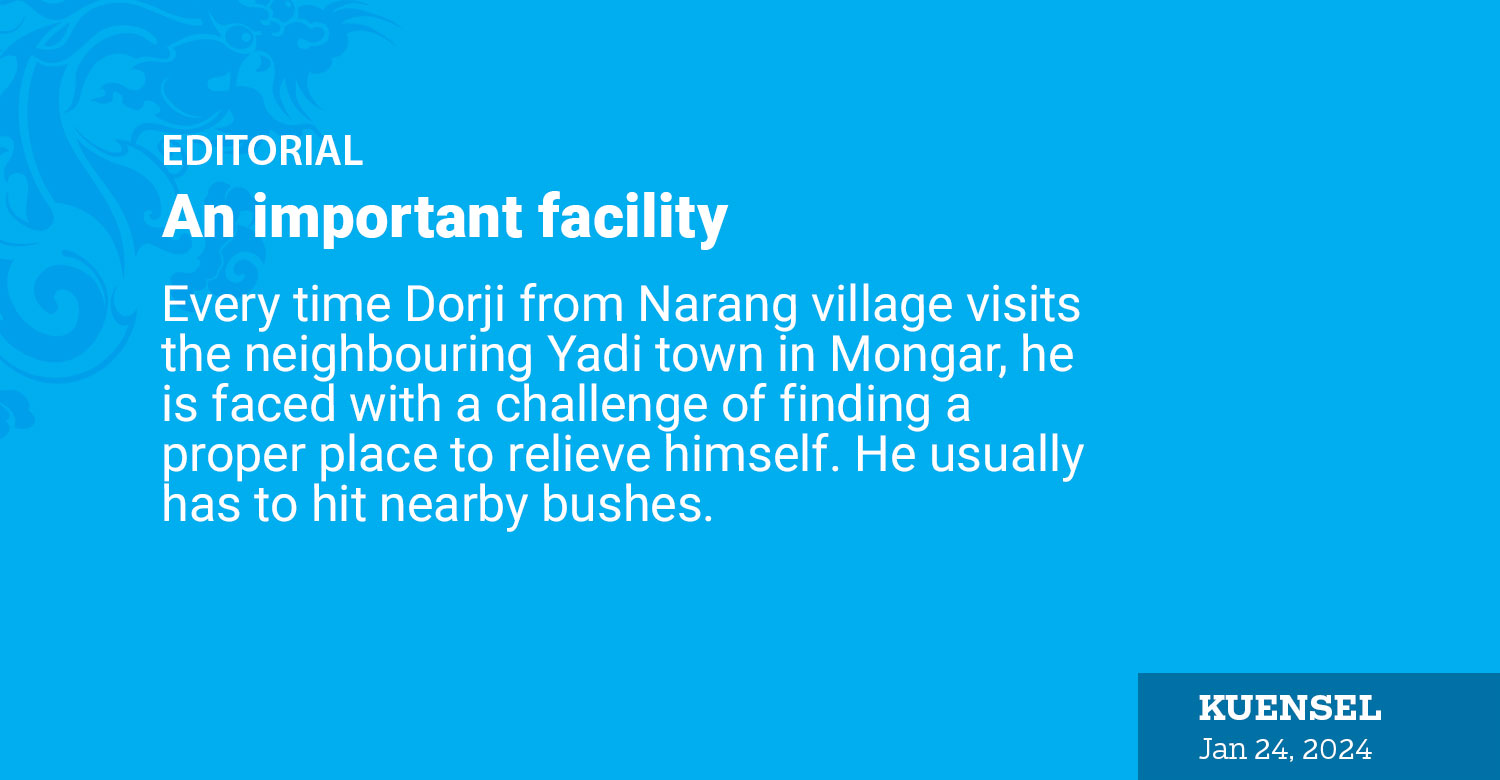Every time Dorji from Narang village visits the neighbouring Yadi town in Mongar, he is faced with a challenge of finding a proper place to relieve himself. He usually has to hit nearby bushes.
The problem extends to commuters along the Mongar-Trashigang highway without standard restroom facilities.
The development of roadside amenities has been under discussion as a priority for a long time. In recent years, the tourism department funded development of roadside amenities in various dzongkhags under different modalities including outsourcing them to the private firms and CSOs. We still need more. No doubt.
Restrooms in particular are the key components of a major tourism destination and they should be constructed at a reasonable distance from each other. Otherwise, the very purpose of these roadside amenities would be defeated.
The expectation is that such facilities would gain more attention under the People’s Democratic Party’s term with an annual target of 300,000 annual visitors. The party pledged to mandate all dzongkhags to develop tourism packages and promote tourism within their respective areas and assured policy, financial and tax incentives to stimulate the construction of tourist hotels, restaurants, and village homestays.
What is seen as sensitive to many as of now, the party has said that it will establish exit and entry points for tourists in the border towns of Samdrupjongkhar, Nganglam, Gelephu, Samtse, Panbang and Jomotshangkha to facilitate border access.
Such emphasis can provide a strong boost to the initiatives already underway in promoting numerous trails and ecotourism sites across the country.
Good quality and adequate number of roadside amenities will play a critical role for the new government’s pledges and initiatives to become effective and sustainable. Because a major aspect for a tourist visiting any country is their access to a clean and efficient toilet facility which can make or break their experience. Access to such facilities should be a must for anyone visiting the country and for the locals as well.
The real challenges have been their location, design and maintenance of roadside amenities. If clear coordination is worked out among the different agencies, it should not be a difficult problem. Such facilities also create employment opportunities.
Before all else, though, we should be responsible users of such facilities. We just cannot expect somebody to construct convenient roadside facilities and ignore our roles as users.


